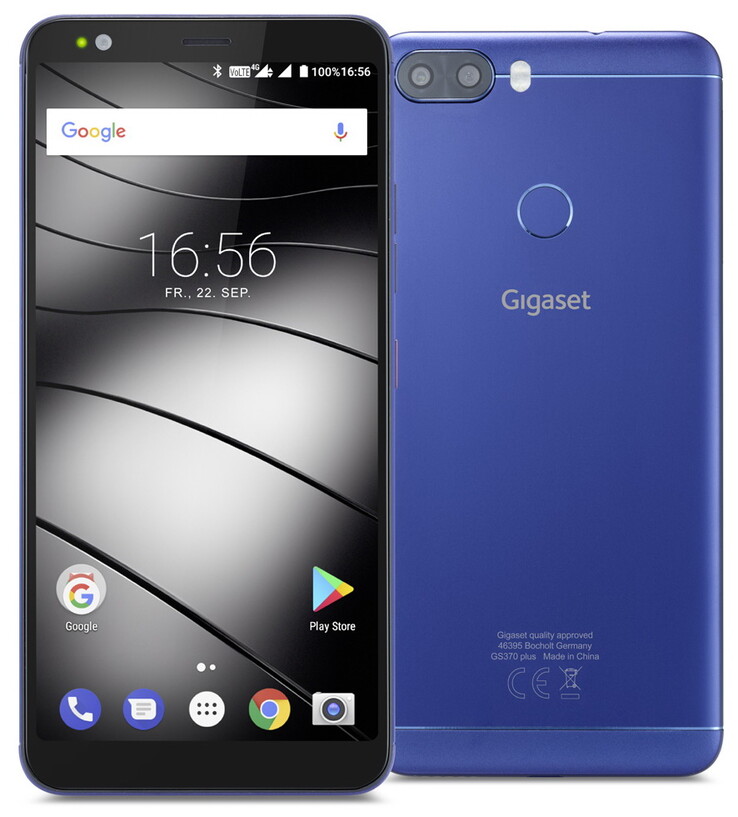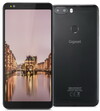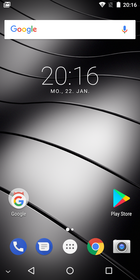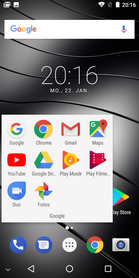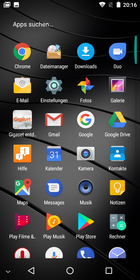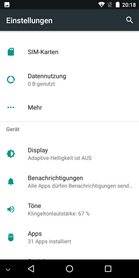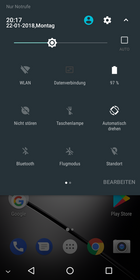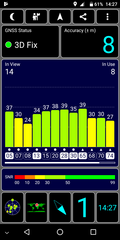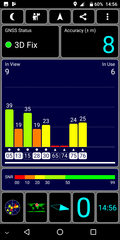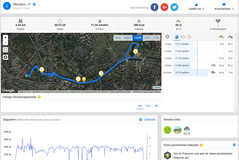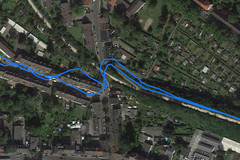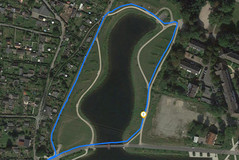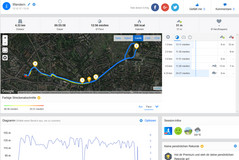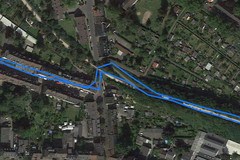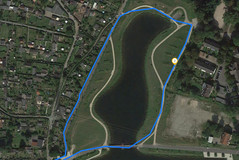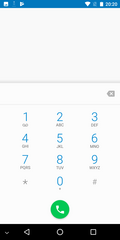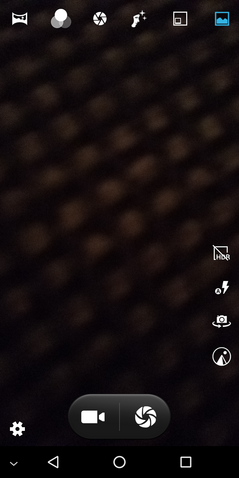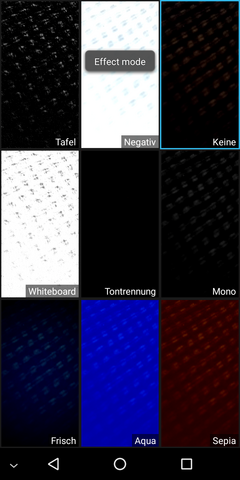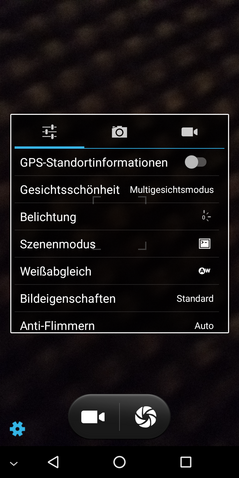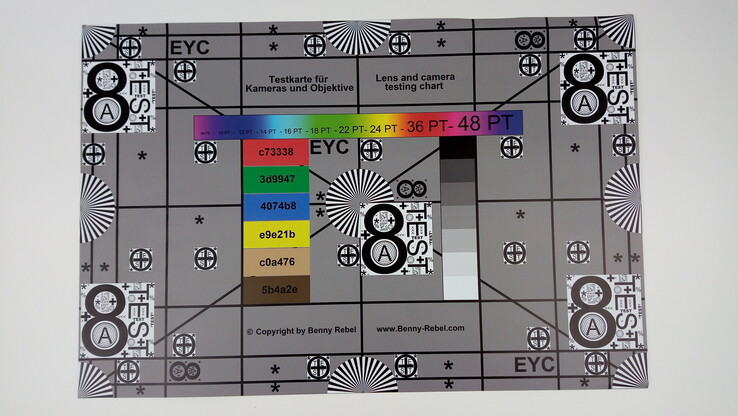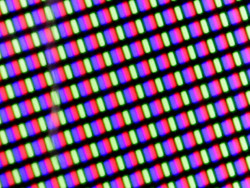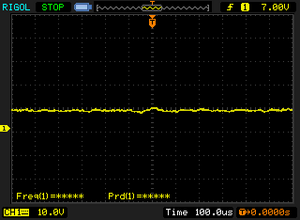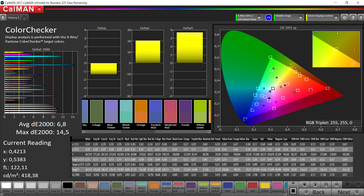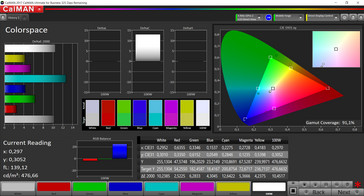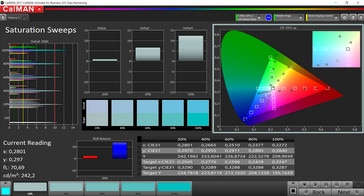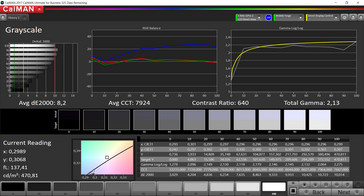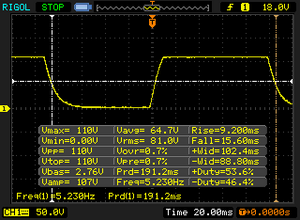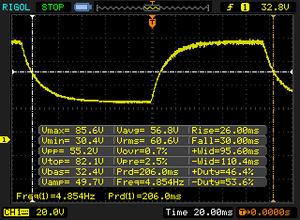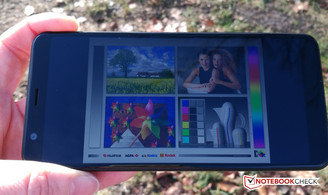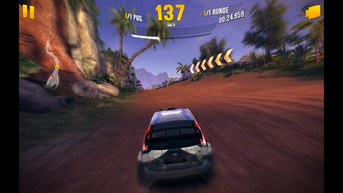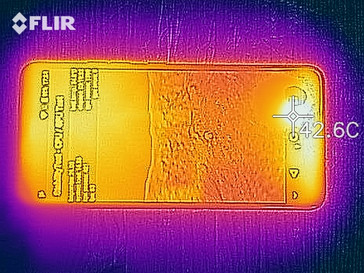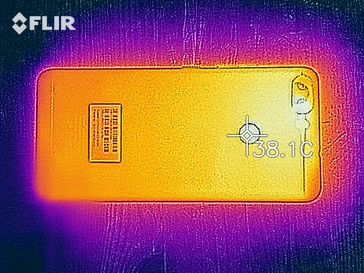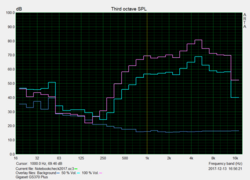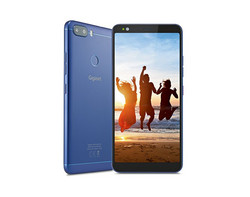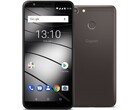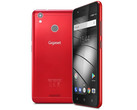Gigaset GS370 Plus Smartphone review
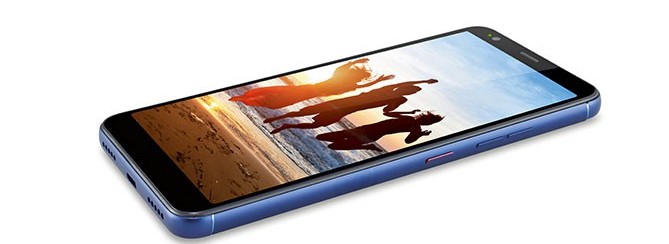
The German manufacturer Gigaset continues to expand their GS-Series with the GS370 and GS370 Plus. Both dual-camera smartphones were launched in November last year, and offer solid hardware for mid-range smartphones. Gigaset has equipped the GS370 series with a large 5.7-inch 1440 x 720 IPS-Display with a modern 18:9 aspect ratio. Both models are powered by an eight core MediaTek processor, have a fingerprint sensor, and come with a wide-angle camera sensor as part of the dual-camera array.
Unlike its smaller sibling, the larger 'plus' model comes with 4 GB of RAM, 64 GB of internal storage, and an 8 MP front facing camera. The GS370 and GS370 Plus have been available from dealers and online since mid-November 2017 for €279 and €299 (~$342 and ~$366) respectively.
However, the current street price of the GS370 Plus has already fallen to €250 (~$306). This places the mid-range device in a highly competitive price segment for which there are many alternatives. The competitors of the dual-SIM smartphone included in this review are the Honor 7X, the Motorola Moto G5s Plus, the HTC U11 Life, the Huawei Mate 10 Lite and the BQ Aquaris X.
Case
The GS370 Plus is not very compact with dimensions of 151 x 72 mm (~5.9 x ~2.8 in). Nevertheless, the 8.2 mm (~0.3 in) thick and 145 g (~5.1 oz) smartphone fits comfortably in the hand. The screen bezels around the 5.7-inch screen are narrow for the price range, which the 77% screen to body ratio reflects.
The 2.5D front display glass is slightly curved and fits seamlessly into the aluminium case. The matte finished aluminium case feels good and conceals fingerprints quite well. There are two colours available namely Jet Black and Brilliant Blue.
The power and volume buttons on our test device are impressive. The keys are firmly set within the case, while the pressure points are well defined.
Overall, the feel in the hand, stability and quality of the case are very good for a mid-range device; nothing creaks nor, can it be twisted either.
Connectivity
The internal 64 GB eMMC-storage is ample for a device in this price range. 54 GB of that is available, with the remainder being reserved for the operating system. There is also microSD card expansion up to 128 GB for those of you who need more storage space. This can also be integrated with the internal storage.
The GS370 Plus still has a micro-USB 2.0 port. In addition to charging the device, this port can be used with an on-the-go (OTG) adapter to connect things such as USB sticks or external keyboards. These were both easily recognized in our tests. The GS370 Plus also has a status LED and an FM Radio, the latter of which can be used with included earphones. The device also supports wireless display of your screen contents on external monitors, provided that you are using a capable monitor.
Software
At the time of writing, the GS370 Plus runs Android 7.0 Nougat out of the box with the November 2017 Android security patch. An update to Android 8 Nougat is due in Q2/2018.
The system software is very similar to stock Android. There are only minor visual changes, with Gigaset hardly adding any additional software features. One interesting addition is 'DuraSpeed', which allows you to restrict apps running in the background to allow foreground apps to run optimally.
Communication and GPS
The integrated Wi-Fi chipset complies with all IEEE-802.11 Standards including a/b/g/n and so works on both 2.4 GHz and 5 GHz Wi-Fi frequencies. The range and signal stability are respectable. When next to our Telekom Speedport W921V router the signal strength is around -42 dBm. The transfer speeds to our Linksys EA8500 reference router are only average for a smartphone in this price range. Our editorial staff measured 108 Mbit/s (iperf Server) and 102 Mbit/s (iperf Client), which generally is slow. Our comparison devices mostly perform better in our Wi-Fi tests than the GS370 Plus.
The GS370 Plus uses LTE Cat. 6 (300 Mbit/s Downstream, 50 Mbit/s Upstream) with support for Voice over LTE (VoLTE) and Voice over Wi-Fi (VoWiFi) across 800, 900, 1800, 2100 and 2600 MHz frequencies. It is worth noting that the dual-SIM smartphone also has two nano-SIM card slots and a dedicated microSD card slot so you can take advantage of increased storage while still using two SIMs.
Bluetooth 4.1 is also available on the GS370 Plus. Unfortunately Gigaset has not included an NFC-Chip so you will be unable to use services that require NFC support, such as Android Pay.
The two satellite GPS and GLONASS systems control the GS370 Plus' location accuracy. The accuracy is to approximately eight meters (~26 ft), but takes up to one minute to set a location. The device even finds a signal inside, albeit this was very unstable.
To thoroughly test the GS370 Plus' location accuracy, our editorial staff compared the device against a Garmin Edge 500 on a 5 kilometer (~3.1 mi) bicycle ride. The GS370 Plus deviated by 110 meters (~361 ft) compared with the professional sat nav. This is a respectable result for a smartphone in this price bracket.
Phone Function and Call Quality
Cameras
The rear camera on the GS370 Plus has two sensors with apertures of f/2.0 and f/2.4. The main camera can capture images up to 4800x2704 at 4:3, while the 120° wide-angle camera is an 8 MP sensor that, among other things, can create bokeh-effect shots. There is also a dual tone LED flash to support the main camera in low light conditions. There is no optical image stabilization (OIS) on either camera, with software-based image stabilization used instead.
The GS370 Plus takes good quality photos in good light conditions. Dynamics and image details are decent, although the Phase Detection Autofocus (PDAF) is not always perfect.
The biggest criticism of the rear cameras is with their low-light performance. Shots taken in low-light conditions are visibly blurry and noisy.
The 8 MP front facing camera performs poorly in both good and low-light conditions. Image quality is adequate for selfies, but photos often come out pale and somewhat blurry. Videos can only be recorded in 480p at up to 30 FPS with the front facing camera. The 13 MP main rear camera records up to 1080p (1920x1080) at 30 FPS, while the wide-angle camera records only in 720p.
Accessories and Warranty
Included in the box is a 10-watt modular charger (5 V, 2 A), a USB cable and a pair of earphones. By way of optional accessories, Gigaset has produced a cover in colors that match either variant. These are available on their website.
The device comes with a twenty four-month warranty, which is valid from the date of purchase. Please see our Guarantees, Return Policies and Warranties FAQ for country-specific information.
Input Devices and Operation
Navigation is handled by on-screen buttons in the three-button arrangement to which we have become accustomed with newer Android smartphones. The 5.7-inch multi-touch screen is precise with low response times, while the screen glass feels good to the touch. Google's GBoard is the default preinstalled virtual keyboard.
Unlocking the device with the fingerprint reader worked reliably during our tests, albeit its speed and rate of recognition could be better since neither are the fastest on the market. Additionally, the fingerprint reader supports predefined gestures, such as opening the camera app.
Display
The 5.7-inch IPS display has a pixel density of 282 PPI, running at 720p (1440x720). However, this does not match our comparison devices as these are all equipped with sharper 1080p panels. Nevertheless, the GS370's 720p display is adequate for everyday use and does not noticeably lack sharpness.
The maximum brightness on a pure white background averages only 490 cd/m². When tested with an evenly distributed of light to dark areas (APL50), the display achieved a maximum brightness of 474 cd/m². This number dropped further with adaptive brightness enabled, scoring a mere maximum of 413 cd/m². Oddly, we measured the minimum screen brightness at a relatively high 21 cd/m².
| |||||||||||||||||||||||||
Brightness Distribution: 92 %
Center on Battery: 472 cd/m²
Contrast: 647:1 (Black: 0.73 cd/m²)
ΔE ColorChecker Calman: 6.8 | ∀{0.5-29.43 Ø4.78}
ΔE Greyscale Calman: 8.2 | ∀{0.09-98 Ø5}
Gamma: 2.13
CCT: 7924 K
| Gigaset GS370 Plus IPS, 1440x720, 5.7" | Huawei Honor 7X IPS, 2160x1080, 5.9" | HTC U11 Life SLCD, 1920x1080, 5.2" | Motorola Moto G5s Plus IPS, 1920x1080, 5.5" | BQ Aquaris X LTPS IPS , 1920x1080, 5.2" | Huawei Mate 10 Lite IPS, 2160x1080, 5.9" | Huawei Mate 10 Pro OLED, 2160x1080, 6" | |
|---|---|---|---|---|---|---|---|
| Screen | 47% | 34% | 41% | 35% | 36% | 49% | |
| Brightness middle (cd/m²) | 472 | 533.2 13% | 545 15% | 512 8% | 675 43% | 467 -1% | 629 33% |
| Brightness (cd/m²) | 468 | 511 9% | 526 12% | 500 7% | 702 50% | 457 -2% | 636 36% |
| Brightness Distribution (%) | 92 | 88 -4% | 87 -5% | 90 -2% | 91 -1% | 89 -3% | 94 2% |
| Black Level * (cd/m²) | 0.73 | 0.35 52% | 0.42 42% | 0.35 52% | 0.59 19% | 0.3 59% | |
| Contrast (:1) | 647 | 1523 135% | 1298 101% | 1463 126% | 1144 77% | 1557 141% | |
| Colorchecker dE 2000 * | 6.8 | 2.83 58% | 4.9 28% | 4.6 32% | 4.5 34% | 5 26% | 1.7 75% |
| Colorchecker dE 2000 max. * | 14.5 | 6.72 54% | 8.5 41% | 7.6 48% | 9.1 37% | 8.2 43% | 3.6 75% |
| Greyscale dE 2000 * | 8.2 | 3.7 55% | 5.4 34% | 3.8 54% | 6.4 22% | 6.1 26% | 2.4 71% |
| Gamma | 2.13 103% | 1.9 116% | 2.31 95% | 2.11 104% | 2.24 98% | 2.15 102% | 2.15 102% |
| CCT | 7924 82% | 6918 94% | 7610 85% | 6952 93% | 7478 87% | 7961 82% | 6337 103% |
* ... smaller is better
Screen Flickering / PWM (Pulse-Width Modulation)
| Screen flickering / PWM not detected | |||
In comparison: 53 % of all tested devices do not use PWM to dim the display. If PWM was detected, an average of 8098 (minimum: 5 - maximum: 343500) Hz was measured. | |||
The somewhat mixed impression of the display continues with the similarly high black value of 0.73 cd/m² (APL 50: 0.74 cd/m². This results in a low contrast ratio of 1:647. There are also criticisms of both the color and grayscale accuracies. The IPS panel shows high DeltaE divergences. Furthermore, the color temperature measured at 7924 K is well above the ideal 6500 K which gives the display a bluish tint. Nonetheless, the sRGB color space coverage is good.
Display Response Times
| ↔ Response Time Black to White | ||
|---|---|---|
| 24.8 ms ... rise ↗ and fall ↘ combined | ↗ 9.2 ms rise | |
| ↘ 15.6 ms fall | ||
| The screen shows good response rates in our tests, but may be too slow for competitive gamers. In comparison, all tested devices range from 0.1 (minimum) to 240 (maximum) ms. » 57 % of all devices are better. This means that the measured response time is worse than the average of all tested devices (20.2 ms). | ||
| ↔ Response Time 50% Grey to 80% Grey | ||
| 56 ms ... rise ↗ and fall ↘ combined | ↗ 26 ms rise | |
| ↘ 30 ms fall | ||
| The screen shows slow response rates in our tests and will be unsatisfactory for gamers. In comparison, all tested devices range from 0.165 (minimum) to 636 (maximum) ms. » 92 % of all devices are better. This means that the measured response time is worse than the average of all tested devices (31.6 ms). | ||
Viewing angles are typical for an IPS display, although at low viewing angles there is a slight decrease in brightness. There are also minor color changes if the display is tilted sharply too - from yellowish to blue depending on the viewing angle. While the display is generally readable outdoors, the relatively low maximum brightness could prove problematic when trying to use the device on a sunny day.
Performance
The GS370 Plus is powered by an eight core MediaTek MT6750. This processor is now two years old. The Cortex-A53 processor has a maximum clock speed of 1.5 GHz across the four more powerful cores, with the remainder running at a maximum speed of 1 GHz. Graphics are handled by the ARM Mali-T860 MP2 clocked at 520 MHz.
In benchmarks the MT6750 coupled with 4 GB of RAM fails to match the competition. The GS370 Plus is about fifty percent behind our comparison devices in processor heavy tests, performing particularly poorly against the Qualcomm powered competition. On the other hand, the GS370 Plus scores similarly to the competition in our graphic-intensive benchmarks.
Performance is also only average in everyday use. Often there are micro stutters, with multitasking causing delays and load times being noticeably longer than on our comparison devices.
| AnTuTu v6 - Total Score (sort by value) | |
| Gigaset GS370 Plus | |
| Huawei Honor 7X | |
| HTC U11 Life | |
| Motorola Moto G5s Plus | |
| BQ Aquaris X | |
| Huawei Mate 10 Lite | |
| Huawei Mate 10 Pro | |
| PCMark for Android | |
| Work performance score (sort by value) | |
| Gigaset GS370 Plus | |
| Huawei Honor 7X | |
| HTC U11 Life | |
| Motorola Moto G5s Plus | |
| BQ Aquaris X | |
| Huawei Mate 10 Lite | |
| Huawei Mate 10 Pro | |
| Work 2.0 performance score (sort by value) | |
| Gigaset GS370 Plus | |
| Huawei Honor 7X | |
| HTC U11 Life | |
| Motorola Moto G5s Plus | |
| BQ Aquaris X | |
| Huawei Mate 10 Lite | |
| Huawei Mate 10 Pro | |
| GFXBench (DX / GLBenchmark) 2.7 | |
| T-Rex Onscreen (sort by value) | |
| Gigaset GS370 Plus | |
| Huawei Honor 7X | |
| HTC U11 Life | |
| Motorola Moto G5s Plus | |
| BQ Aquaris X | |
| Huawei Mate 10 Lite | |
| Huawei Mate 10 Pro | |
| 1920x1080 T-Rex Offscreen (sort by value) | |
| Gigaset GS370 Plus | |
| Huawei Honor 7X | |
| HTC U11 Life | |
| Motorola Moto G5s Plus | |
| BQ Aquaris X | |
| Huawei Mate 10 Lite | |
| Huawei Mate 10 Pro | |
| GFXBench 3.0 | |
| on screen Manhattan Onscreen OGL (sort by value) | |
| Gigaset GS370 Plus | |
| Huawei Honor 7X | |
| HTC U11 Life | |
| Motorola Moto G5s Plus | |
| BQ Aquaris X | |
| Huawei Mate 10 Lite | |
| Huawei Mate 10 Pro | |
| 1920x1080 1080p Manhattan Offscreen (sort by value) | |
| Gigaset GS370 Plus | |
| Huawei Honor 7X | |
| HTC U11 Life | |
| Motorola Moto G5s Plus | |
| BQ Aquaris X | |
| Huawei Mate 10 Lite | |
| Huawei Mate 10 Pro | |
| GFXBench 3.1 | |
| on screen Manhattan ES 3.1 Onscreen (sort by value) | |
| Gigaset GS370 Plus | |
| Huawei Honor 7X | |
| HTC U11 Life | |
| Motorola Moto G5s Plus | |
| BQ Aquaris X | |
| Huawei Mate 10 Lite | |
| Huawei Mate 10 Pro | |
| 1920x1080 Manhattan ES 3.1 Offscreen (sort by value) | |
| Gigaset GS370 Plus | |
| Huawei Honor 7X | |
| HTC U11 Life | |
| Motorola Moto G5s Plus | |
| BQ Aquaris X | |
| Huawei Mate 10 Lite | |
| Huawei Mate 10 Pro | |
| GFXBench | |
| on screen Car Chase Onscreen (sort by value) | |
| Gigaset GS370 Plus | |
| Huawei Honor 7X | |
| HTC U11 Life | |
| Motorola Moto G5s Plus | |
| BQ Aquaris X | |
| Huawei Mate 10 Lite | |
| Huawei Mate 10 Pro | |
| 1920x1080 Car Chase Offscreen (sort by value) | |
| Gigaset GS370 Plus | |
| Huawei Honor 7X | |
| HTC U11 Life | |
| Motorola Moto G5s Plus | |
| BQ Aquaris X | |
| Huawei Mate 10 Lite | |
| Huawei Mate 10 Pro | |
Unfortunately, this trend also continues in our Browser tests. The MediaTek SoC is also around fifty percent behind the highest scoring of its competitors.
| JetStream 1.1 - Total Score | |
| Huawei Mate 10 Pro (Chrome 61) | |
| Huawei Honor 7X (Chrome 63.0.3239.111) | |
| Huawei Mate 10 Lite (Chrome 62) | |
| HTC U11 Life (Chrome 63) | |
| BQ Aquaris X (Chrome Version 60) | |
| Motorola Moto G5s Plus (Chroem Version 62) | |
| Gigaset GS370 Plus (Chrome 63) | |
| Octane V2 - Total Score | |
| Huawei Mate 10 Pro (Chrome 61) | |
| Huawei Honor 7X (Chrome 63.0.3239.111) | |
| Huawei Mate 10 Lite (Chrome 62) | |
| HTC U11 Life (Chrome 63) | |
| BQ Aquaris X (Chrome Version 60) | |
| Motorola Moto G5s Plus (Chroem Version 62) | |
| Gigaset GS370 Plus (Chrome 63) | |
| Mozilla Kraken 1.1 - Total | |
| Gigaset GS370 Plus (Chrome 63) | |
| HTC U11 Life (Chrome 63) | |
| Motorola Moto G5s Plus (Chroem Version 62) | |
| BQ Aquaris X (Chrome Version 60) | |
| Huawei Mate 10 Lite (Chrome 62) | |
| Huawei Honor 7X (Chrome 63.0.3239.111) | |
| Huawei Mate 10 Pro (Chrome 61) | |
* ... smaller is better
The performance of the internal eMMC-storage is on par with other mid-range devices, with more modern UFS-2.0 storage currently unavailable in this price range. In comparison to the competition the transfer rates of the GS370 Plus are satisfactory. The integrated microSD card slot performs well too. While the maximum theoretical read/write speeds for our reference Toshiba Exceria Pro M501 card are 270 MB/s and 150 MB/s respectively, the GS370 Plus achieves speeds of 77 MB/s and 56 MB/s. This is typical for a current mid-range smartphone.
| Gigaset GS370 Plus | Huawei Honor 7X | HTC U11 Life | Motorola Moto G5s Plus | BQ Aquaris X | Huawei Mate 10 Lite | Huawei Mate 10 Pro | |
|---|---|---|---|---|---|---|---|
| AndroBench 3-5 | -5% | 25% | 13% | -16% | -23% | 301% | |
| Sequential Read 256KB (MB/s) | 284.9 | 265.3 -7% | 268 -6% | 237.4 -17% | 266.4 -6% | 286.8 1% | 732 157% |
| Sequential Write 256KB (MB/s) | 182.4 | 127.9 -30% | 120 -34% | 75.7 -58% | 75.3 -59% | 99.8 -45% | 208.7 14% |
| Random Read 4KB (MB/s) | 48.4 | 81.4 68% | 39.3 -19% | 37.94 -22% | 37.47 -23% | 31.5 -35% | 132.3 173% |
| Random Write 4KB (MB/s) | 17.1 | 20.24 18% | 50.2 194% | 44.89 163% | 11.85 -31% | 15.26 -11% | 164.4 861% |
| Sequential Read 256KB SDCard (MB/s) | 76.5 ? | 52.7 -31% | 82.8 ? 8% | 79.6 ? 4% | 84.3 ? 10% | 69.1 ? -10% | |
| Sequential Write 256KB SDCard (MB/s) | 56.1 ? | 30.55 -46% | 59.8 ? 7% | 58.8 ? 5% | 62.6 ? 12% | 35.35 ? -37% |
Games
Fortunately the GS370 Plus overcomes its comparatively weak CPU and GPU when gaming, playing sophisticated 3D games at medium quality. We suspect that the 720p screen helps bridge the relative performance gap identified in our benchmarks by requiring less power to run than its 1080p counterparts. The more efficient 720p panel therefore helps to even out the GS370's performance deficit with its competition. Additionally, the touchscreen and sensors also responded accurately when playing games.
Emissions
Temperature
Even though the competition often run cooler, the GS370 Plus' surface temperatures were impressive in our tests. The device heats up only slightly both when idling and under load. The rear does heat up more though, hitting above 40 °C (~104 °F) at its warmest point under maximum load.
(±) The maximum temperature on the upper side is 40.4 °C / 105 F, compared to the average of 35.2 °C / 95 F, ranging from 21.9 to 247 °C for the class Smartphone.
(+) The bottom heats up to a maximum of 38.7 °C / 102 F, compared to the average of 34 °C / 93 F
(±) In idle usage, the average temperature for the upper side is 32.1 °C / 90 F, compared to the device average of 32.9 °C / 91 F.
Speakers
The mono speaker on the bottom of the GS370 Plus is powerful, and reaches a maximum of 86 dB(A). The sound quality is sufficient, but would be more suitable for short videos than for listening to music since the sound quality is not great. The sound tends to be unbalanced, with no bass and is tiny at higher volumes.
The sound quality is better with the included headphones, but these are not of notable quality either.
Gigaset GS370 Plus audio analysis
(+) | speakers can play relatively loud (85.6 dB)
Bass 100 - 315 Hz
(-) | nearly no bass - on average 38.8% lower than median
(±) | linearity of bass is average (8% delta to prev. frequency)
Mids 400 - 2000 Hz
(+) | balanced mids - only 4.8% away from median
(±) | linearity of mids is average (8.2% delta to prev. frequency)
Highs 2 - 16 kHz
(±) | higher highs - on average 5.8% higher than median
(±) | linearity of highs is average (7% delta to prev. frequency)
Overall 100 - 16.000 Hz
(±) | linearity of overall sound is average (27.9% difference to median)
Compared to same class
» 72% of all tested devices in this class were better, 5% similar, 23% worse
» The best had a delta of 11%, average was 35%, worst was 134%
Compared to all devices tested
» 84% of all tested devices were better, 3% similar, 13% worse
» The best had a delta of 4%, average was 24%, worst was 134%
HTC U11 Life audio analysis
(+) | speakers can play relatively loud (90.2 dB)
Bass 100 - 315 Hz
(-) | nearly no bass - on average 27.5% lower than median
(+) | bass is linear (6.7% delta to prev. frequency)
Mids 400 - 2000 Hz
(±) | reduced mids - on average 9% lower than median
(+) | mids are linear (6.9% delta to prev. frequency)
Highs 2 - 16 kHz
(±) | higher highs - on average 9% higher than median
(+) | highs are linear (4.7% delta to prev. frequency)
Overall 100 - 16.000 Hz
(±) | linearity of overall sound is average (25.4% difference to median)
Compared to same class
» 63% of all tested devices in this class were better, 7% similar, 31% worse
» The best had a delta of 11%, average was 35%, worst was 134%
Compared to all devices tested
» 77% of all tested devices were better, 5% similar, 18% worse
» The best had a delta of 4%, average was 24%, worst was 134%
Huawei Honor 7X audio analysis
(±) | speaker loudness is average but good (78.7 dB)
Bass 100 - 315 Hz
(-) | nearly no bass - on average 26.3% lower than median
(±) | linearity of bass is average (8.5% delta to prev. frequency)
Mids 400 - 2000 Hz
(±) | higher mids - on average 6.1% higher than median
(±) | linearity of mids is average (9.3% delta to prev. frequency)
Highs 2 - 16 kHz
(±) | higher highs - on average 11.5% higher than median
(±) | linearity of highs is average (11.1% delta to prev. frequency)
Overall 100 - 16.000 Hz
(-) | overall sound is not linear (34.9% difference to median)
Compared to same class
» 85% of all tested devices in this class were better, 1% similar, 14% worse
» The best had a delta of 11%, average was 35%, worst was 134%
Compared to all devices tested
» 93% of all tested devices were better, 1% similar, 6% worse
» The best had a delta of 4%, average was 24%, worst was 134%
Frequency diagram comparison - checkboxes are selectable and de-selectable
Battery Life
Energy consumption
The GS370 Plus is energy efficient. Power consumption when idling is low, while under load its consumption is competitive with our comparison devices.
| Off / Standby | |
| Idle | |
| Load |
|
Key:
min: | |
| Gigaset GS370 Plus 3000 mAh | Huawei Honor 7X 3340 mAh | HTC U11 Life 2600 mAh | Motorola Moto G5s Plus 3000 mAh | BQ Aquaris X 3100 mAh | Huawei Mate 10 Lite 3340 mAh | Huawei Mate 10 Pro 4000 mAh | |
|---|---|---|---|---|---|---|---|
| Power Consumption | -30% | -3% | -3% | -16% | -14% | -3% | |
| Idle Minimum * (Watt) | 0.77 | 1.02 -32% | 0.63 18% | 0.83 -8% | 1.12 -45% | 0.87 -13% | 0.85 -10% |
| Idle Average * (Watt) | 1.58 | 2.46 -56% | 2.1 -33% | 1.67 -6% | 2.16 -37% | 2.14 -35% | 1.15 27% |
| Idle Maximum * (Watt) | 1.73 | 2.51 -45% | 2.15 -24% | 1.85 -7% | 2.18 -26% | 2.16 -25% | 1.23 29% |
| Load Average * (Watt) | 3.59 | 4.16 -16% | 3.34 7% | 3.47 3% | 2.94 18% | 3.7 -3% | 4.12 -15% |
| Load Maximum * (Watt) | 5.69 | 5.87 -3% | 4.83 15% | 5.41 5% | 5.1 10% | 5.48 4% | 8.42 -48% |
* ... smaller is better
Battery Life
The GS370 Plus' built-in battery has a 3,000 mAh capacity and can be charged in just under two hours with a fast charging compatible charger (5V, 2A). In our practical Wi-Fi test it took the GS370 Plus eight hours and seven minutes to fully discharge from 100% with brightness set at 150 cd/m2. While this is an adequate result, it is well behind the competition.
| Gigaset GS370 Plus 3000 mAh | Huawei Honor 7X 3340 mAh | HTC U11 Life 2600 mAh | Motorola Moto G5s Plus 3000 mAh | BQ Aquaris X 3100 mAh | Huawei Mate 10 Lite 3340 mAh | Huawei Mate 10 Pro 4000 mAh | |
|---|---|---|---|---|---|---|---|
| Battery runtime | |||||||
| WiFi v1.3 (h) | 8.1 | 11.1 37% | 12.1 49% | 16.2 100% | 9.9 22% | 8.7 7% | 13.6 68% |
Pros
Cons
Verdict
The Gigaset GS370 Plus is an aesthetically pleasing, well made mid-range smartphone. In our opinion, Gigaset limits the potential of the device with its choice of display and processor. While the 18:9 IPS display is in keeping with the style of display increasingly found in high-end smartphones, its quality is well short of even equivalent mid-range devices. The Mediatek MT6750 is a poor choice for a €300 smartphone released in late 2017. In this price range we would have expected a more powerful processor to have been chosen instead. This would have helped to rectify the below average system performance that we found in our benchmarks.
Gigaset will find it difficult to establish itself among the competition with the GS370 Plus as the likes of the Honor 7X offer a more rounded and overall better experience.
Gigaset GS370 Plus
- 02/05/2018 v6 (old)
Marcus Herbrich




